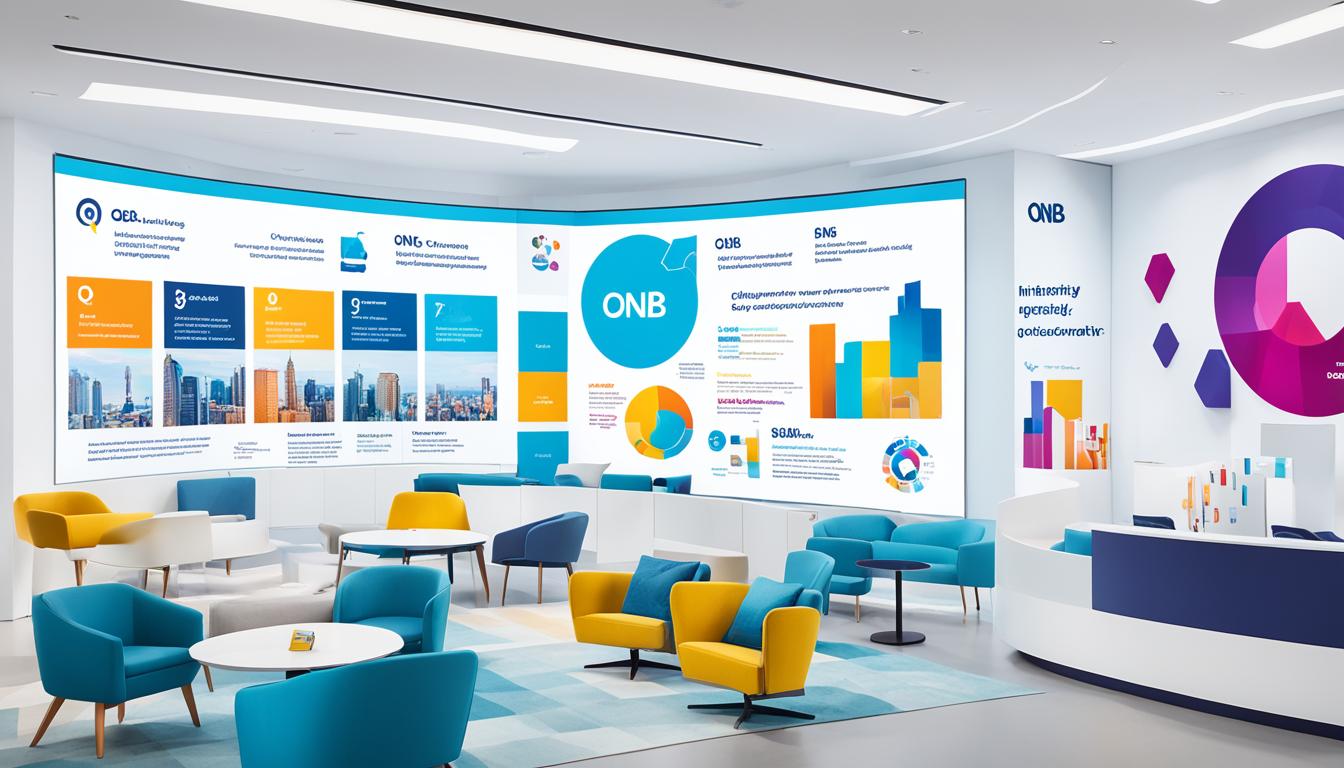Japan Airlines (JAL) has been at the forefront of innovative marketing strategies in the aviation industry. In this case study, we will explore JAL’s marketing strategy for 2024 and how it contributes to their continued success and growth. By leveraging digital platforms, emphasizing exceptional customer experiences, and prioritizing sustainability, JAL has positioned itself as a leading airline not only in Japan but globally.
Key Takeaways:
- JAL is leveraging social media and live streaming platforms to enhance customer engagement.
- They have positioned themselves as a premium airline through branding tactics and superior customer service.
- JAL’s competitive strategy emphasizes exceptional service and constant innovation.
- Their marketing initiatives target specific customer segments and aim to expand their global presence.
- JAL’s sustainability initiatives contribute to their brand reputation and appeal to socially conscious customers.
JAL’s Market Positioning and Branding Tactics
Japan Airlines (JAL) has established itself as a premium airline in the industry, known for its commitment to excellent customer service and providing a superior flying experience. This positioning serves as the foundation for JAL’s branding tactics, which aim to create a strong and distinctive brand image.
To reinforce their brand identity, JAL employs consistent messaging across all touchpoints, ensuring that customers recognize and associate the airline with its core values of luxury, reliability, and personalized service. Whether it’s through advertising campaigns, social media content, or in-flight communications, JAL maintains a cohesive brand voice that resonates with its target audience.
JAL’s branding tactics extend beyond messaging, encompassing strategic partnerships with other luxury brands. By aligning with renowned names in different industries, such as high-end hotels or fashion labels, JAL effectively enhances its brand prestige and reaches new audiences that share the same values of luxury and sophistication.
Moreover, JAL continuously invests in upgrading its aircraft and onboard amenities, an essential component of its branding strategy. By providing passengers with state-of-the-art cabins, comfortable seating, and innovative features, JAL aims to deliver a truly exceptional travel experience that sets them apart from competitors.
JAL’s Branding Tactics Overview:
- Consistent messaging across all channels
- Strategic partnerships with luxury brands
- Continuous investment in upgrading aircraft and onboard amenities
This comprehensive approach to branding not only differentiates JAL from its competitors but also fosters a sense of trust and loyalty among customers. JAL’s market positioning as a premium airline is directly reflected in its branding tactics and serves as a solid foundation for the airline’s success in the industry.
| Key Benefits of JAL’s Market Positioning and Branding Tactics |
|---|
| 1. Differentiation from competitors |
| 2. Enhanced brand prestige |
| 3. Increased trust and loyalty among customers |
JAL’s Competitive Strategy
In order to stand out in a highly competitive airline industry, Japan Airlines (JAL) has developed a comprehensive competitive strategy that sets them apart from other airlines. By focusing on outstanding customer service, offering unique amenities and services, and constantly innovating their offerings, JAL aims to provide a seamless and memorable travel experience for their customers.
One of the key elements of JAL’s competitive strategy is their emphasis on exceptional customer service. They understand that delivering a high level of service not only creates customer loyalty but also sets them apart from their competitors. JAL recognizes the importance of going above and beyond in meeting customer expectations, whether it’s through personalized service, attentive cabin crew, or prompt resolution of customer issues.
In addition to customer service, JAL differentiates themselves through the offering of unique amenities and services. For example, they provide exclusive lounges with comfortable seating, complimentary refreshments, and dedicated staff to cater to their premium customers. JAL also offers a range of innovative services, such as in-flight Wi-Fi connectivity, advanced entertainment systems, and unique dining options that showcase their commitment to enhancing the overall travel experience.
To stay ahead of the competition, JAL is constantly innovating and evolving their offerings. They invest in the latest aircraft models and technologies to provide a modern and comfortable flying experience. JAL also collaborates with renowned designers and brands to create exclusive partnerships and limited-edition amenities, further enhancing the uniqueness and desirability of their services.
Overall, JAL’s competitive strategy revolves around providing exceptional customer service, offering unique amenities and services, and constantly innovating their offerings. By doing so, they position themselves as a preferred choice for travelers seeking a memorable and seamless travel experience. This approach ensures that JAL remains at the forefront of the airline industry and continues to excel in their competitive landscape.
JAL’s Competitive Strategy Highlights
| Key Elements | Description |
|---|---|
| Exceptional Customer Service | Delivering high-quality service to exceed customer expectations and create loyalty. |
| Unique Amenities and Services | Offering exclusive lounges, in-flight Wi-Fi, advanced entertainment systems, and innovative dining options. |
| Constant Innovation | Investing in modern aircraft, collaborating with renowned designers, and creating exclusive partnerships. |
JAL’s Marketing Initiatives and Targets
JAL, one of the leading airlines in the industry, has implemented a range of marketing initiatives to enhance its market share and reach. By targeting specific customer segments, such as business travelers and frequent flyers, JAL aims to attract and retain valuable customers. Let’s take a closer look at some of their key marketing campaigns:
- Loyalty Programs: JAL offers loyalty programs that provide exclusive benefits and rewards to frequent travelers. These programs encourage customer loyalty and retention, offering incentives such as priority boarding, access to airport lounges, and additional baggage allowances.
- Personalized Marketing Communications: JAL leverages customer data to create personalized marketing communications that resonate with individual travelers. By tailoring their messages and offers to customer preferences, JAL can effectively engage and convert their target audience.
- Strategic Partnerships: JAL forms strategic partnerships with other brands and companies to expand its reach and offer enhanced services to customers. These partnerships can include joint marketing campaigns, co-branded promotions, and reciprocal loyalty programs.
In addition to these initiatives, JAL is also focused on expanding its global presence and reaching new markets. Through targeted marketing efforts, JAL aims to establish itself as a preferred choice for international travelers. This includes localized marketing campaigns, partnerships with local travel agencies, and market-specific promotions.
With these marketing initiatives and targets, JAL is well-positioned to achieve its goals and strengthen its position in the competitive airline industry.
| Marketing Initiative | Target Audience | Objective |
|---|---|---|
| Loyalty Programs | Frequent travelers | Encourage customer loyalty and retention |
| Personalized Marketing Communications | Individual travelers | Increase engagement and conversion |
| Strategic Partnerships | Customers and partner brands | Expand reach and offer enhanced services |
JAL’s Financial Performance and Targets
JAL (Japan Airlines) has achieved impressive financial performance, with a projected consolidated full-year EBIT of 170 billion yen for FY2024. In their ongoing pursuit of growth, JAL has set an upward revision of their EBIT target for FY2025 to 200 billion yen. The success of JAL’s financial performance is closely tied to their strategic marketing plan and overall marketing strategy. This plan plays a crucial role in driving customer acquisition, retention, and revenue growth for the airline.
JAL’s marketing strategy focuses on maximizing revenue from various sources, including ticket sales, ancillary services, and partnerships. Their marketing initiatives are designed to attract new customers, retain existing ones, and drive revenue growth through innovative strategies and effective campaigns. By leveraging their strong brand image and highlighting the unique value proposition they offer, JAL aims to position themselves as a top choice for travelers.
In order to achieve their financial targets, JAL’s marketing plan emphasizes the importance of customer satisfaction and loyalty. By delivering exceptional customer experiences and services, JAL aims to build long-term relationships with their customers, driving repeat business and positive word-of-mouth recommendations. Additionally, JAL’s marketing team continuously monitors market trends and consumer preferences to stay ahead of the competition and adapt their strategies accordingly.
Maximizing Revenue Streams
A key aspect of JAL’s marketing strategy is the optimization of revenue streams. This involves identifying opportunities to generate additional revenue beyond traditional ticket sales. JAL achieves this through various ancillary services such as in-flight Wi-Fi, premium seat upgrades, and excess baggage allowances. By offering these optional services, JAL not only enhances the customer experience but also increases revenue per passenger. This diversification of revenue streams ensures JAL’s financial stability and supports their ambitious growth targets.
Partnerships for Success
JAL’s marketing plan includes strategic partnerships with other airlines, hotels, and travel companies to expand their reach and offer enhanced travel experiences to their customers. These partnerships provide reciprocal benefits, such as codesharing agreements that increase the availability of flights and destinations for JAL’s customers. By partnering with reputable brands, JAL enhances their brand image and attracts a wider customer base, fueling their financial success.
Data-Driven Marketing Approach
JAL adopts a data-driven marketing approach, leveraging customer insights and market analytics to refine their strategies and campaigns. By analyzing customer behavior, preferences, and demographics, JAL can tailor their marketing efforts to target specific customer segments more effectively. This targeted approach allows JAL to allocate their resources efficiently and achieve a higher return on investment from their marketing activities.
Striving for Continuous Improvement
JAL understands the importance of continuous improvement and innovation in maintaining their financial success. By actively seeking feedback from customers and monitoring market trends, JAL can identify areas for improvement and develop innovative solutions. This commitment to constant evolution ensures that JAL remains competitive in the dynamic airline industry and continues to drive growth and financial performance.
JAL’s Sustainability Initiatives
JAL (Japan Airlines) is unwavering in its commitment to sustainability, implementing various initiatives to minimize its environmental impact. These efforts align with the airline’s long-term vision of achieving net-zero carbon emissions by 2050. By integrating fuel-efficient aircraft, waste reduction programs, and carbon offset projects, JAL is actively contributing to environmental conservation while simultaneously bolstering its brand reputation.
Reducing Carbon Footprint through Fuel Efficiency
JAL recognizes that fuel consumption is a significant contributor to carbon emissions in the aviation industry. To address this issue, the airline has embraced fuel-efficient aircraft as a core component of its sustainability initiatives. By investing in modern, eco-friendly planes, JAL strives to reduce its overall carbon footprint by optimizing fuel consumption and minimizing greenhouse gas emissions.
Minimizing Waste through Innovative Programs
JAL has implemented comprehensive waste reduction programs to ensure responsible management of resources throughout its operations. These initiatives focus on minimizing waste generation, enhancing recycling efforts, and promoting sustainable practices among staff and passengers. By prioritizing waste reduction, JAL aims to minimize its impact on the environment and create a more sustainable future for the aviation industry.
Offsetting Carbon Emissions through Projects
To mitigate the unavoidable carbon emissions resulting from its operations, JAL actively participates in carbon offset projects. These initiatives involve investing in activities that help to reduce or remove carbon dioxide from the atmosphere. By offsetting its carbon emissions, JAL demonstrates its commitment to environmental responsibility and contributes to the overall goal of achieving net-zero carbon emissions.
| Sustainability Initiatives | Description |
|---|---|
| Fuel-efficient aircraft | JAL invests in modern, fuel-efficient planes to reduce carbon emissions and optimize fuel consumption. |
| Waste reduction programs | JAL implements comprehensive initiatives to minimize waste generation, enhance recycling, and promote sustainable practices. |
| Carbon offset projects | JAL actively participates in projects that help to offset its carbon emissions, contributing to the goal of net-zero carbon emissions. |
JAL’s Long-Term Vision and Initiatives
JAL, one of the leading airlines in Japan, has a clear long-term vision known as JAL Vision 2030. This vision outlines their goals and initiatives for the future, emphasizing their commitment to enhancing the sustainability of their business and creating social and economic value. By 2030, JAL aims to be a driving force in the aviation industry, consistently delivering exceptional service to customers and actively contributing to society.
To achieve their long-term vision, JAL has developed a comprehensive marketing plan that focuses on customer-centric strategies, continuous innovation, and building strong relationships with customers and partners. By placing customers at the center of their approach, JAL aims to understand their evolving needs and preferences, tailoring their services and offerings accordingly. This customer-centric approach not only enhances customer satisfaction but also drives loyalty and helps attract new customers.
JAL’s marketing initiatives aim to showcase their unique Japanese airline marketing approach, which emphasizes the rich cultural heritage and hospitality that Japan is known for. By highlighting these aspects, JAL differentiates itself from competitors and creates a strong brand image that resonates with customers.
JAL’s commitment to continuous innovation sets them apart in the industry. They constantly explore new technologies, trends, and industry best practices to improve their services and customer experience. For example, JAL leverages digital platforms and innovative marketing techniques to reach and engage with their target audience effectively.
JAL recognizes the importance of building strong relationships with customers and partners. Through strategic collaborations and partnerships, they expand their reach and offer more value to their customers. By partnering with other airlines, travel agencies, hotels, and other key players in the industry, JAL can provide seamless travel experiences and offer a wide range of services to their customers.
JAL’s Long-Term Vision Initiatives
| Initiative | Description |
|---|---|
| Enhancing Sustainability | JAL aims to reduce their environmental impact through various initiatives, such as investing in fuel-efficient aircraft and implementing waste reduction programs. |
| Customer-Centric Strategies | By understanding and meeting customer needs, JAL aims to deliver exceptional experiences that drive customer loyalty and satisfaction. |
| Continuous Innovation | JAL embraces new technologies and trends, constantly striving to improve their services and stay ahead of the competition. |
| Strong Relationships | JAL builds strategic partnerships with industry stakeholders to enhance their offerings and provide a seamless travel experience. |
JAL’s Partnership with American Airlines
JAL has established a strategic partnership with American Airlines, one of Japan Airlines’ Pacific Joint Business partners. This collaboration allows both airlines to jointly operate flight schedules, providing customers with enhanced connectivity and a seamless travel experience. As part of this partnership, American Airlines is launching new nonstop service on the Tokyo Haneda – New York route, and JAL will add its code to these flights, offering customers more options and convenient travel arrangements.
This partnership between Japan Airlines and American Airlines strengthens JAL’s network and global presence. By working together, both airlines can leverage their resources, expertise, and extensive route networks to enhance customer satisfaction and offer a wider range of travel options. This collaboration is a testament to JAL’s commitment to providing exceptional service and meeting the varied needs of their passengers.
Through this partnership, Japan Airlines’ marketing strategy is further enhanced. The increased connectivity and joint operations with American Airlines enable JAL to reach more destinations and attract a broader customer base. This expanded network strengthens JAL’s position in the industry and allows them to offer a comprehensive travel experience to their customers.
JAL’s Customer Experience Enhancements
JAL is committed to providing a customer experience that goes above and beyond, offering a range of enhancements to ensure every passenger’s journey is smooth, comfortable, and memorable. With a focus on attention to detail and personalized service, JAL’s customer experience enhancements set them apart from other airlines in the industry.
Seamless Travel Experience
JAL understands the importance of a seamless travel experience. That’s why they have partnered with American Airlines, co-locating at JFK Terminal 8, to provide customers with easy connections and a convenient transfer process. This collaboration allows for efficient transfers between flights, saving travelers time and eliminating the hassle of navigating different terminals.
In addition, JAL offers access to state-of-the-art lounges at JFK Terminal 8, creating a comfortable and welcoming space for passengers to relax, work, or refresh before their flight. With amenities such as complimentary Wi-Fi, comfortable seating, and a variety of food and beverage options, JAL’s lounges provide a tranquil retreat amidst the bustling airport environment.
First-Class Inflight Services
JAL’s commitment to customer experience extends to their inflight services. In their Flagship Business cabin, passengers can enjoy the luxury of all-aisle access, ensuring easy movement and uninterrupted privacy throughout the flight. The spacious and comfortable seating enhances the overall comfort of the journey, allowing passengers to arrive at their destination feeling refreshed and rejuvenated.
Another highlight of JAL’s inflight experience is their chef-designed Japanese menus, which showcase the finest flavors of Japan. From delectable sushi and sashimi to carefully crafted entrees, JAL ensures that every meal is a culinary delight. These gourmet offerings, combined with attentive service from their inflight crew, create a memorable and premium dining experience in the sky.
Overall, JAL’s dedication to enhancing the customer experience is evident in every aspect of their service. From seamless travel connections to luxurious inflight amenities, JAL strives to exceed customer expectations and provide a journey that is truly exceptional.
JAL’s Recognition and Awards
JAL has garnered widespread recognition and numerous awards for its exceptional service and unwavering commitment to customer satisfaction. These accolades highlight the airline’s relentless dedication to providing the highest quality service, which is a central pillar of JAL’s marketing strategy.
5-Star Airline Certification by Skytrax
One of the most notable accolades received by JAL is its certification as a 5-Star Airline by Skytrax, a prestigious aviation quality rating organization. This recognition is a testament to JAL’s relentless pursuit of excellence in every aspect of its operations, from customer service to onboard amenities.
“World Class” Airline Title by APEX
JAL has also been honored with the esteemed title of “World Class” Airline by APEX, the Airline Passenger Experience Association. This recognition signifies JAL’s commitment to providing an unparalleled travel experience that goes above and beyond customer expectations.
By consistently delivering exceptional service and exceeding customer expectations, JAL has solidified its position as a leader in the airline industry. These awards further reinforce the airline’s reputation for excellence and contribute to its continued success in the global aviation market.
Conclusion
The success of Japan Airlines can be largely attributed to their comprehensive and strategic marketing strategy. By prioritizing customer-centric initiatives, JAL has been able to create a strong brand image and differentiate themselves in the highly competitive aviation industry. Through their branding tactics and emphasis on exceptional customer service, JAL has positioned itself as a leading airline that consistently delivers superior flying experiences.
In addition to their customer-centric approach, JAL has also implemented sustainability initiatives that align with their long-term vision. By investing in fuel-efficient aircraft and implementing waste reduction programs, JAL is not only reducing their environmental impact but also appealing to socially conscious customers who value sustainability.
Strategic partnerships with airlines like American Airlines have further strengthened JAL’s marketing strategy. These partnerships enhance connectivity and provide customers with more options for seamless travel experiences. With a commitment to continuous innovation and building strong customer relationships, Japan Airlines is well-positioned for continued growth and success in the global aviation market.





